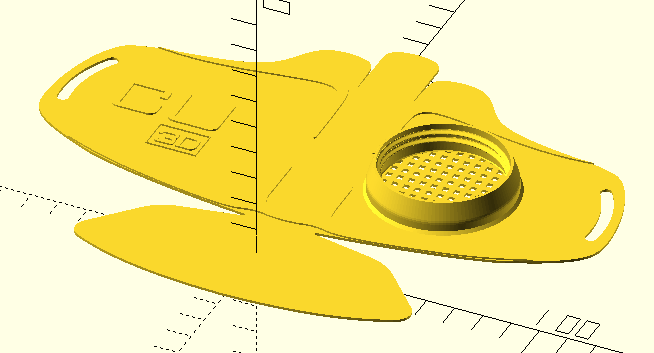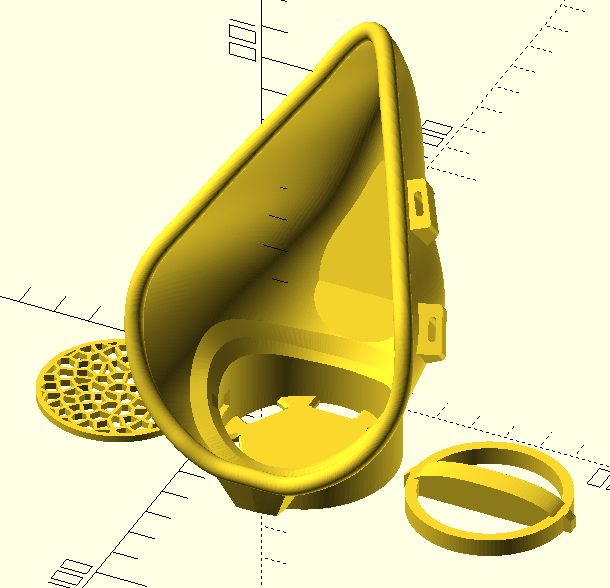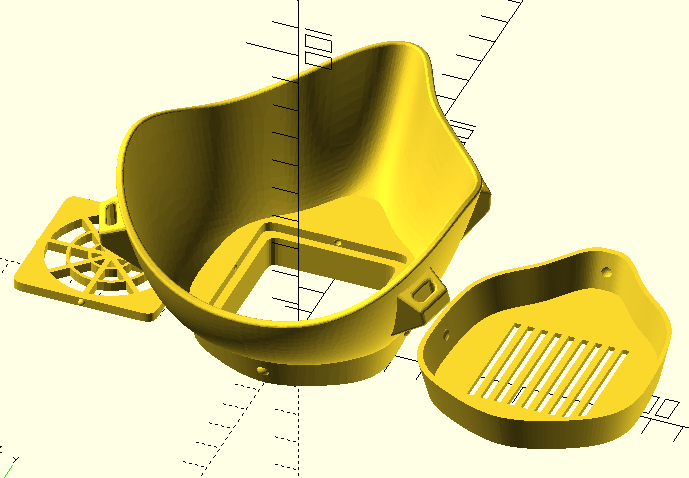Table of Contents
2020-05-28 - 3D printing during pandemic
COVID-19 pandemic is a fairly unique event. last time something spread that wide was Spanish flu epidemic, over a 100 years ago.
this time new pandemic hit in a time where technology got advanced enough to diagnose it and react fairly quickly. the virus' DNS was sequenced around 1 month after it was discovered for the first time. genetic tests for its presence soon followed.
it turned out that thanks to 3D printing, some protective equipment could also be made, in times of its biggest shortage. since many ppl asked me about models i use and some general knowledge, like filtration norms, i've gathered it on a covid-19 github repo. there's not much – just very condensed basics. and 3D models for different masks.
materials
copper is a material that fairly fast kills both bacteria and viruses (3h in case of covid-19). on many other surfaces like cardboard or chrome parts (think: door knobs) covid-19 virus can remain for 2 and 3 days, respectively. now you know why water plumbing is now typically made out of copper pipes. :)
interesting enough, there is a PLA-like material with copper nano pieces, called PLActive. it is a bit more demanding in printing and gives a bit less precise prints, but overall is a nearly a drop-in replacement for regular PLA. it can be used for 3D printing protective equipment.
mask models
i went though LOADS of models. most of them were basically broken in a way that did not require printing to figure it out. i gave a shot to a couple of them, printing total of 20+ masks for different ppl.
nanohack v1
this was the first mask that grabbed mass attention. i've printed 3 or 4 of these (with minor mods to make it usable). it turned out that it is next to impossible to make it well-sealed and comfortable to wear, as the model required some post-processing with a hot air, to form into a person's face. interesting idea, but a total disaster in practice. not worth one's time.
nanohack v2
the second approach was much better. i've printed 2 of these, in different sizes. both were too “pointy” near the nose, making it difficult to both fit well and breath in. did not fit any of the 4 tested ppl.
also lesion learned – even though the author suggested scaling of the model by a coupe % up or down as a way to fit it better… it just does not work this way. the print in 105% scale required a lot of post-processing. 3D printer does not have infinite resolution and randomly scaling things results in artifacts.
givewave studios' model
this model turned out to be nearly perfect! with a bit of rubber band for mounting and a door-gasket for sealing, it worked like a charm with no post-processing after the printing, aside from mounting rubbers and gasket. when i finally managed to get PLActive (2-3 weeks of monitoring shops before i managed to get one of the last pieces of it on the stock) i continued printing the masks for friends and family out of it, instead of a regular PLA.
filtering
of course mask is one thing – filtering material is needed to make it complete.
good HEPA filters can be obtained from some models of vacuum cleaners. i gave them a shot, back at the time any filtering masks were pretty much inaccessible. it turned out that, despite being fairly expensive, these were also extremely difficult to breath though. small surface allowed by a mask mad it even worse. during trials i ended up tearing the filter by a very heavy breathing needed to provide at least a small amount of oxygen into inside of the mask. to provide a reasonable breathing surface it would probably need to be 20x20cm area or more. vacuum cleaner filters turned out not to be the right choice, despite proper filtering standards.
after a few trials i ended up using surgical masks, cut into peaces. this way i could both replace filters often and use material of a single mask multiple times (4 out of one mask, for the mask model i'm am using). normally such a mask is not considered to be much of a filtering equipment, as the air passes through surrounding of the mask uninterrupted. however the material itself is water tight! so if you put it into a well sealed mask, that fits your face well, it does provide some protection.
usage
when wearing such a filtering mask, you do still need to breath heavily. the mask is tight and a good filter does not pass air that easily (after all it is meant to capture things that has some tens of nanometers in diameter). note that masks for medical doctors typically have exit valve, that allows to blow out the air out of the mask with nearly no force. this makes breathing in it significantly easier and safer. this is however NOT the option for a general public, during pandemic, as you do not only wear mask to protect yourself but also to protect others from you! interestingly most ppl do not know that surgical masks are actually designed with exactly this case in mind – they protect the surrounding from the wearer, not the other way around, as most ppl assume.
heavy breathing in a tightly-sealed mask is also needed to make sure CO2 is pushed out of it. if you breath too lightly, CO2 can build up inside over time. that could start as a headache and end up with loosing conscious. as CO2 is smellless, tasteless and is transparent, you need to be aware of the possible problem and watch out for any symptoms of CO2 poisoning. the best approach here is to avoid situations, when you'd need to wear such a mask for a prolonged periods of time.



